Do you leave your computer on all the
time? Are you downloading torrents, streaming media files to other PCs in
your house, or serving files for remote access?
If you've
nodded yes to any of the above, it might be time to think about a more
power-efficient processor. Computer systems that are constantly on draw a lot of
power over time, and that kind of power-inefficiency may add up to an expensive
electricity bill. One of the easiest solutions is to upgrade that old
power-sucking Pentium 4 PC to a more electricity-efficient CPU with an
Active Power Factor 80+ rated power supply. Computing power
for everyday applications will improve but with a lower carbon footprint.
That's the idea behind AMD's Athlon II X2 240e. It's a 2.8GHz dual-core
processor based on the AMD "Regor" core with a TDP of just 45W. The "e"
behind the Athlon II X2 240e model name indicates that it's one of AMDs
Energy Efficient processors.
Similarly to the AMD
Athlon II X2 250 PCSTATS recently benchmarked, the Athlon II X2 240e
has a transistor count of 234 Million, 256KB of L1 and 2MB of L2 cache, and no
L3 cache whatsoever. The Athlon II X2 240e
is compliant with Hypertransport 3.0, operating at 2.0GHz: data is sent twice per clock
cycle (DDR) so the final duplexed speed of HT3 is 4.0GHz. This is sent along
a 16-bit/16-bit link, which translates to 16GB/s of bus bandwidth between the CPU and the
chipset.
As an Athlon II processor, the Athlon II X2 240e
enjoys AMD's efforts to keep its processors cross-compatible. The Athlon II X2
240e has support for both DDR2 and DDR3 memory, depending on if the processor is
dropped into a socket AM2+ or socket AM3 motherboard. Memory can be run at
speeds of DDR2-1066 or DDR3-1333 via the Athlon II X2 240e's integrated memory
controller.
 |
|
|
AMD Athlon II X2 240e Processor |
|
|
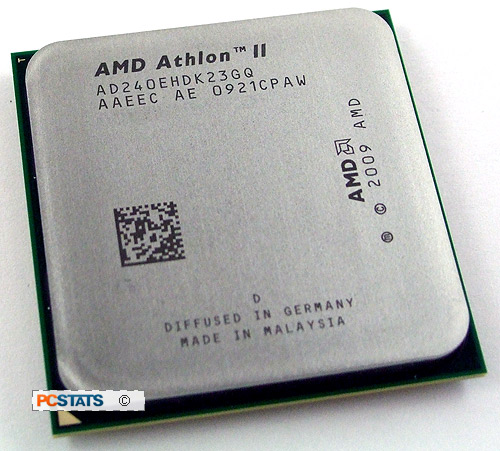 |
| Tech
Specs |
|
Athlon II X2 240e
(dual
core)
Clock: 2.8GHz
L1: 256KB total
L2: 2MB
total
L3: none
Multiplier: 13.0x
Package:
938-pin
Socket: AM3 (AM2+)
organic mPGA
Core: 45nm
SOI
Transistor: ~234M
Power: 45W
Vcore:
0.775-1.35V
Cost: $77 USD |

| |
The AMD Athlon II processor and AMD's 785G chipset
are both fully ready for Microsoft Windows 7 operating system. In fact, the AMD
'Dragon' platform is positioning itself as an economical mainstream solution for
Windows 7 PCs. Windows 7 is moderately more demanding than Vista, requiring at
least a 1GHz processor, 1GB of memory and DirectX 9 compatible graphics solution
with WDDM 1.0.
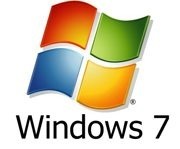
The Athlon II X2 240e also supports full hardware virtualization, allowing
one of its two cores to run a copy of Windows XP inside of Microsoft Windows 7.
Virtualized Windows XP will be especially practical when it comes to legacy
software applications that don't run in Windows 7. The Athlon II is also the
first CPU to move C1E low power states out of the BIOS and onto the
CPU.
AMD's Athlon II X2 240e is aimed at both mainstream buyers and value-oriented
PC applications where a lightweight, low-cost computer system is needed to fill
the void. The processor costs $80 CDN ($77 USD, £50 GBP), which means its closest
competition is AMD's own Athlon II X2 250. Let's find out if the Athlon II X2
240e can walk the tightrope between power consumption and performance...
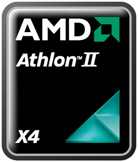 AMD "Regor"
core
AMD "Regor"
core
If you've read PCSTATS' review of the AMD Athlon II X2
250, you should already be familiar with AMD's "Regor" die. Regor is AMD's
mainstream CPU die. . To make sense of AMD's Athlon II X2 240e processor, it's good to get the big picture of AMD's current
CPU offerings first. AMD currently has four different families of 45nm desktop processors
that make up its Phenom and Athlon brands.
The fastest and most expensive of these is the AMD Phenom II X4, based on the
"Deneb" die. This is what you'll find running under the hood (or under the heat
shield, to be specific) of processors like the Phenom
II X4 965 Black Edition, AMD's current flagship processor. It has four cores
and 6MB of L3 cache.
Slotting in underneath "Deneb" are AMD's enthusiast
dual-core dies, codenamed "Callisto". This die has two cores but still keeps the
6MB of L3 cache, which makes it a very good candidate for overclocking
performance. You can find "Callisto" dies in the AMD Phenom II X2 550 Black
Edition. On the Athlon side of things, there's the quad-core "Propus" die. This
processor die is actually very similar to "Deneb", with the same four cores but
missing the L3 cache. AMD has turned "Propus" into its mainstream quad and
triple-core processors. Check out PCSTATS' review of the AMD Athlon II X4 620 processor
for more information on the "Propus" die.
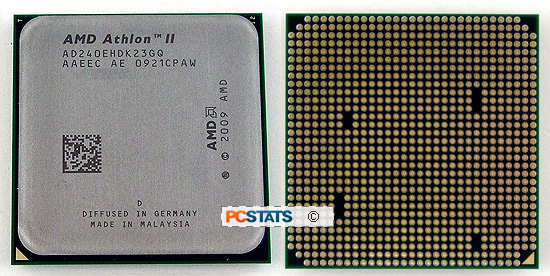
Which brings us to "Regor", the smallest and least complicated of the four 45nm AMD processor dies currently
in circulation. "Regor" is what drives AMD's mainstream dual core processors, like
the Athlon II X2 250 or the energy efficient Athlon II X2 240e. It has a pair of
CPU cores, and no L3 cache.
The Athlon II X2 240e processor has a small die measuring just 117mm2 with a
234 million transistor count. Small sizes and low transistor counts are great
when it comes to building energy efficient processors, and this is wheres Athlon
II X2 240e-based PC can really shine. 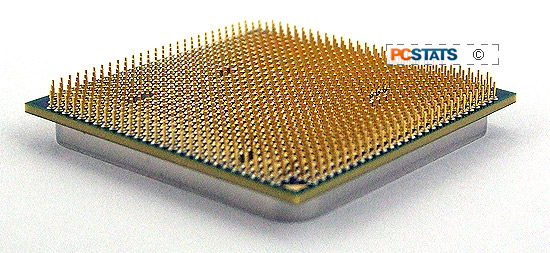 While some of
AMD's "Deneb" processors (like the Phenom II X4 965 Black Edition) have TDPs in
the 140W range, AMD's standard "Regor" CPUs are rated at just 65W TDP.
While some of
AMD's "Deneb" processors (like the Phenom II X4 965 Black Edition) have TDPs in
the 140W range, AMD's standard "Regor" CPUs are rated at just 65W TDP.
And now, thanks to a bit of engineering magic, AMD has managed to make the
Athlon II X2 240e even more energy-friendly bringing its maximum TDP to a mere
45W. That's less than a light bulb.
Low wattage processors aren't always the most exciting when it comes to high
clock speeds, number-crunching or multi-threading, but they do have a lot of
practical uses, particularly when it comes to building a secondary PC that's
only doing a limited number of tasks.
Take building a home media PC that doubles as a media
server, for instance. It's a PC that will likely be on all the time in order to
serve media to a home network, so it's ideal for a processor like the Athlon II
X2 240e which doesn't use a lot of electricity.
If it's doubling as a home
theatre PC, you'll want it to be as silent as possible. Again, processors like
the Athlon II X2 240e generate so little heat that it's possible to use good passive
heatsinks or a low-height, low-noise HSF combination.

